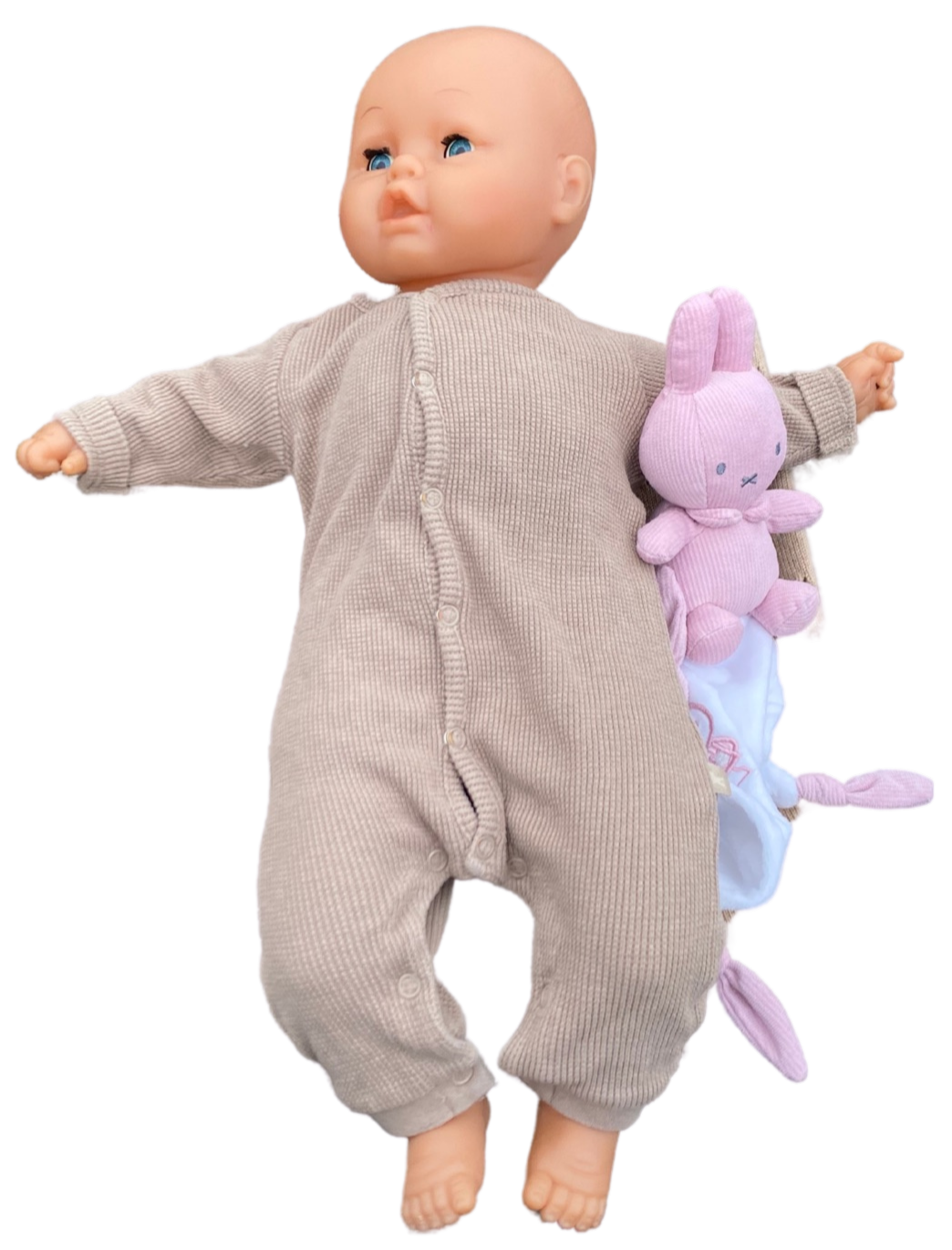
This early 2000s Baby Doll originates from an unidentified German manufacturer. Regarding the classic features of a child’s baby doll, it shows a light skin and wide blue eyes, a well-known toy in Western households. Passed down for generations, the appearance of this particular toy has a gender-neutral torso crafted from plush cotton, while its limbs and head are from soft plastic. The Baby Doll serves as a symbol of societal evolution, embodying cultural norms and values. Originally crafted from porcelain to educate children on caregiving, today’s version has a ubiquitous, mass-produced material. Symbolizing familial dynamics and gender constructs, this doll encourages role-playing as a caregiver, predominantly towards young girls.
Furthermore, commercially, it reinforces gender, racial, and beauty standards. This stems from its ubiquitous appearance. But also, the baby doll used in kids play reflects cultural influence of reinforcing traditional familial roles. Notably, recent shifts in commercialization depict a wider acceptance of different gender identities. Modern baby doll advertisements now also show boys playing with these dolls, compared to earlier commercials that are solely featuring girls. These changes in marketing reflect and support the evolving social norms surrounding gender the contemporary shift of role identities.

Photo of the Baby Doll used for this 3D edition, made by the author, 2024.